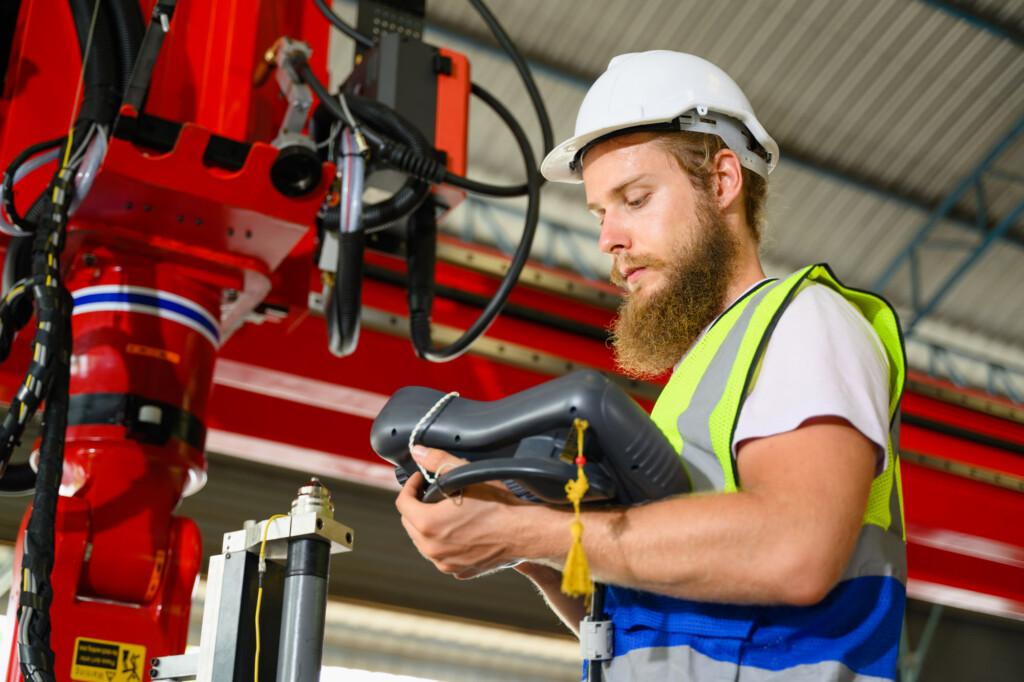
Unveiling the Power of Digital Twin: Creating value in the digital era
When something breaks down unexpectedly, the service is much more expensive, spare parts can be difficult to get and overtime work is usually needed. In short, unplanned downtime is very expensive. It is one of the main reasons to invest in creating digital twins, but only a part of all the benefits and possibilities.
Would it be convenient to be able to know exactly how your machines work, what conditions they are in or when would they need maintenance? In today’s world this option has been possible for quite some time, the solution is called Digital Twin. The technology is available, the essence is finding the right business case for your company.
In this blog post, we’ll dive into what digital twins are and explore how they can be leveraged to create significant value.
Understanding the Digital Twin
The concept of “Twin” is rather old. Nasa’s Apollo Program first introduced it, when two identical space vehicles were built, one in space and the other one here on earth.
The Digital Twin is the mind of the machine in other words, intelligent enough to communicate with humans. It offers various of opportunities for businesses to optimize operations, enhance productivity, and drive innovation. Digital twins are part of industry 4.0. The purpose of digital twin is to create a virtual model of a physical object in a digital way to simulate their behavior. The virtual models could understand, predict, estimate, and analyze the dynamic changes in the state of physical entities with the help of sensing data.
From real-time to history and predictions
Digital Twin is not merely a static model but a dynamic, real-time replica that mirrors the behavior and performance of its physical counterpart. This digital replica is created by combining data from various sources such as sensors, IoT devices, cloud, on-premises, and historical records. With the help of advanced analytics, AI, and machine learning algorithms make it possible to simulate and visualize the object or system.
Digital twins bring the physical object to the grasp of our hand. Also, different tests can be done to the Twin to simulate the different outcomes which could have happened or will in the future potentially happen. Digital Twin enables the user to have a 2-way communication with the product or service, which means the user can send commands or receive information or suggestions from the Twin.
Digital twins can range from simple representations of individual components to complex models of entire ecosystems such as powerplants or even cities. For instance, in manufacturing, a digital twin might replicate a specific machine. Through this, companies are transforming from product manufacturers to system integrators.
How to create value utilizing Digital Twin
1. Predictive maintenance
One of the most compelling applications of digital twins is predictive maintenance. By continuously monitoring the performance of physical assets through their digital counterparts, businesses can anticipate maintenance needs, identify potential issues before they occur, and schedule maintenance activities proactively. This not only minimizes downtime but also extends the lifespan of assets, leading to significant cost savings.

2. Performance Optimization
Digital twins enable organizations to gain deep insights into the behavior and performance of their assets or processes. By analyzing data generated by the digital twin, businesses can identify optimization opportunities, streamline operations, and maximize efficiency. Whether it’s fine-tuning machine performance or optimizing energy consumption in buildings, digital twins provide a powerful platform to continuous improvement.
3. Product Innovation
In addition to optimizing existing operations, digital twins also fuel innovation. By simulating different scenarios and experimenting in a virtual environment, businesses can iterate on designs, test new ideas, and accelerate the development of new products and services. Whether it’s designing more efficient motors in electrification or creating personalized healthcare solutions, digital twins serve as a sandbox for innovation, allowing organizations to push the boundaries of what is possible.
4. Enhanced Decision Making
Digital twins provide decision-makers with a holistic view of their assets or systems, empowering them to make data-driven decisions with confidence. Whether it’s forecasting demand, optimizing supply chain logistics, or mitigating risks, having real-time insights from digital twins enables organizations to make informed choices that drive better outcomes. Provide state- of the art customer service to your customers via Digital Twin.
Implementing Digital Twin: Key Considerations
While the potential benefits of digital twins are substantial, implementing them successfully requires careful planning and execution. Here are some key considerations:
- Data integration: Digital twins rely on data from various sources, so ensuring seamless integration and functionality across systems is essential.
- Security and Privacy: Safeguarding sensitive data and ensuring compliance with privacy regulations is paramount when dealing with digital twins.
- Scalability: As the complexity and scope of digital twins grow, scalability becomes crucial to accommodate expanding data volumes and computational requirements.
- Seamless Collaboration: Developing digital twins often requires collaboration between domain experts, data scientists, engineers, and IT professionals to ensure alignment with business objectives and technical feasibility.
Conclusion
Digital twins represent a shift in how businesses conceptualize, design, and manage physical assets and processes. By harnessing the power of digital twins, organizations can unlock new opportunities for optimization, innovation, and value creation. However, realizing the full potential of digital twins requires a strategic approach, investment in technology infrastructure, a commitment to ongoing improvement. As we continue to embrace the digital age, digital twins will undoubtedly play a pivotal role in shaping the future of industries across the globe.
Author





